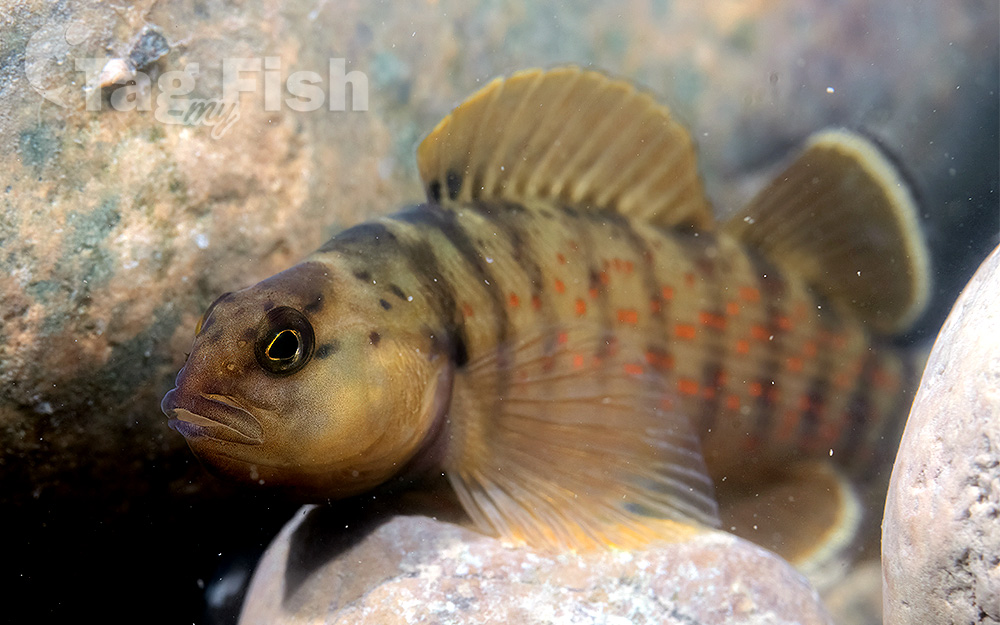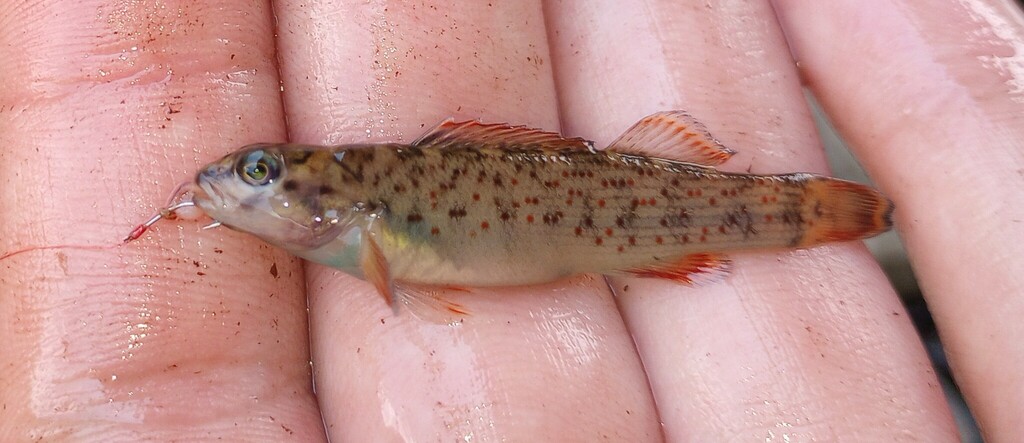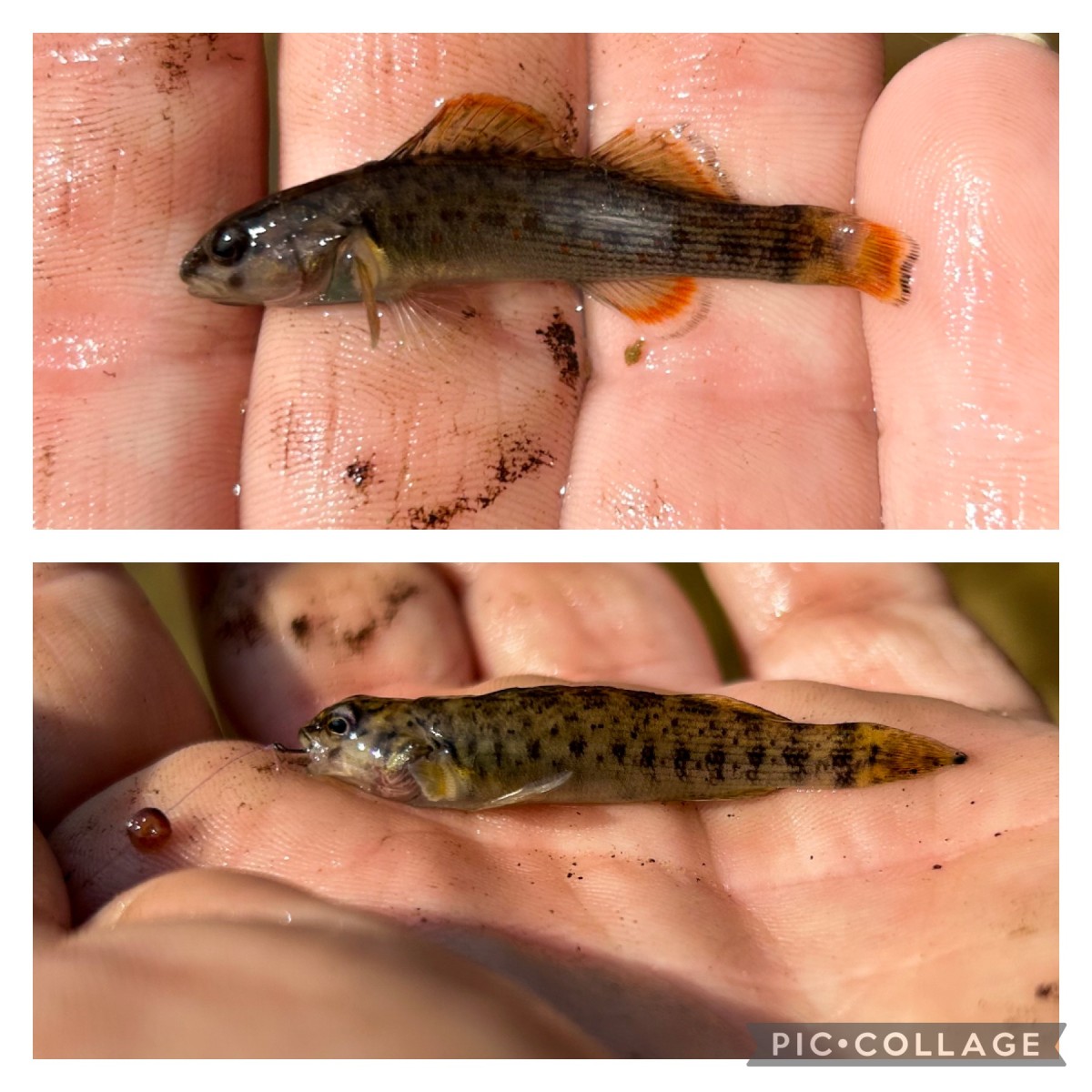Bluebreast darter
(Etheostoma camurum)

Classification
General data
The bluebreast darter is small in size, rarely reaching longer than three inches. The snout is a blunt, more rounded than other darters, and its gill covers do not bridge the breast. It is a colorful fish, predominantly olive green with a broad, lighter band that runs adjacent to the dark fringe of the second dorsal and anal fins, reaching the base of the caudal fin. During breeding, though, males tend to be very colorful, usually with orange-tinted dorsal fins, dark red spots along the sides, and the descriptive bright blue breast from which it gets its name.
The species is commonly found in clean-flowing, medium to large rivers with high benthic current velocity and an abundance of sedimentary gravel. Currently, E. camurum is listed as imperiled or higher in seven eastern US states.
Most of the Eastern Highlands in the US, extending latitudinally from Tennessee to New York and longitudinally from West Virginia to Illinois. Populations have historically inhabited streams in the Ohio River drainage, the Alleghany River basin (NY and PA), the Wabash River basin (IN and IL), and the Tennessee River basin (TN and NC). Its habitats in these regions have patchy distributions as a result of habitat degradation and fragmentation following the post-Pleistocene dispersal.
In New York, its conservation status will likely be raised to endangered following its severe population decline. Likely causes of decline have been linked to physical effects, such as impoundments, and chemical effects, such as agriculture drainage runoff, to the darter\\\\\\\\\\\\\\\\\\\\\\\\\\\\\\\'s natural habitat. In addition, its specialized habitat makes it highly vulnerable to environmental and anthropogenic pressures. As a result of these pressures, populations have become increasingly isolated and restricted to moderate to large streams with turbid flow and high water quality.













